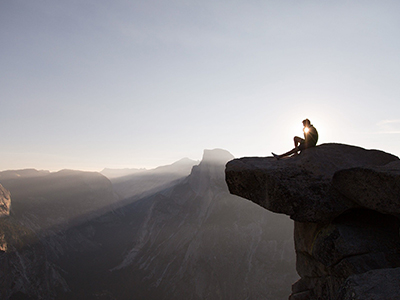
Yosemite National Park, California, USA
New study reveals how participation trends in outdoor recreation will change across the continental U.S.
With the summer winding down, millions of Americans are reflecting on their summer adventures outdoors and planning their fall and winter getaways for the months ahead. However, making those plans to hike, bike, or ski, are going to be a lot different in the years ahead according to a new study from the Institute of Outdoor Recreation and Tourism at Utah State University. The study, published in Global Environmental Change, found that rising temperatures will likely result in less outdoor recreation occurring in the summer, as temperatures become uncomfortably hot. The study reports summer outdoor recreation is expected to decrease by 18% over the next 30 years. The study also found that climate change is likely to be a boon for winter outdoor recreation, but that the once dominant winter outdoor recreation activities like downhill skiing will be replaced by increasingly popular activities like mountain biking. The study notes winter outdoor recreation on public lands is expected to increase 12% by mid-century.
“We have known for a while that outdoor recreation and visitation to public lands is sensitive to temperature,” says Dr. Emily Wilkins, who led the research. “What’s important about this study however, is that it shows how much variation there is in the impacts of climate change on visitation to public lands across the country. There are substantial differences whether you are talking about outdoor recreation in Oregon or in Florida” The study used 14 years of geotagged social media data from across the continental U.S. to document where and when people were getting outside and visiting public lands. These trends were then combined with historical and future climate data to map out regional variations in the sensitivity of outdoor recreation on public lands to temperature increases. This allowed the research team to document areas of the country where the largest changes are expected to occur. For example, visitation to public lands in the southeastern U.S. is expected to decline by over 50% in the summer by 2050, significantly more than the rest of the country. Similarly, winter outdoor recreation is likely to increase the most in Texas, Oklahoma, and the upper Midwest.
“It is important for public land managers, like folks who work for the National Park Service and US Forest Service, to have a good understanding of what the demand for outdoor recreation will look like in the future,” said Dr. Jordan Smith, Director of the Institute of Outdoor Recreation and Tourism. “With this information, they can make more informed decisions about where to invest time and effort to either build new outdoor recreation infrastructure, like trails and visitors centers, or maintain existing infrastructure.”
The study reveals the future of outdoor recreation is likely to be very different than what we have experienced in the past.
For further information about this research, please contact Dr. Jordan W. Smith at jordan.smith@usu.edu

